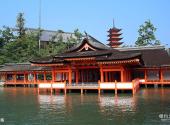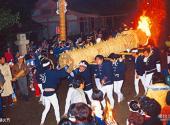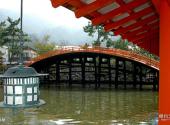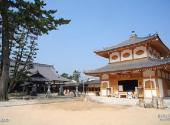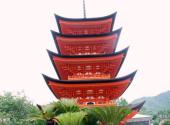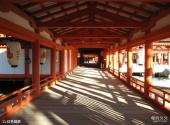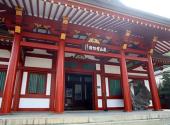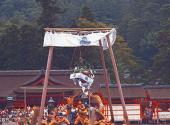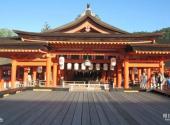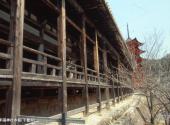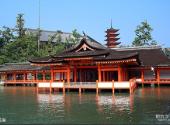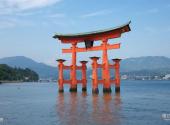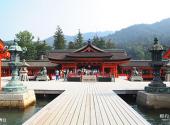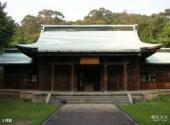
Scenic spot introduction:
Itsukushima Shinto Shrine is located in Saeki County, Hiroshima Prefecture, 10 kilometers southwest of Hiroshima City. In 1555 AD, the "Battle of Itsukushima" was the ancient battlefield where Motoro Moto, a military commander from the Warring States Period, defeated Tao Qingxian, a military commander from the late Muromachi period. The climate is warm and the scenery is pleasant. Ancient shrines, Buddhist temples and other buildings can be seen everywhere on the island, some of which are designated as national treasures. In the center of the island is the 530-meter-high Mishan Mountain, which is densely wooded and green. Itsukushima Shrine is a representative scenic spot on Miyajima Island. It was worshiped as the "Guardian God of the Sea" in ancient times. Itsukushima Shrine in Japan mainly worships the three sea goddesses in ancient Japanese legends. In 1996, it was included in the UNESCO World Cultural Heritage List.Attractions distribution:
Itsukushima Shrine is composed of the main shrine and the shrine of Shōsha. The main shrine has the main hall, the coin hall, the worship hall, the shrine, the high stage, the flat stage, etc. The shrine has the main shrine of Shōshō Daikuni Shrine, the main shrine of Daimoto Shrine, and the Tenjin mine. The main shrine of Benju Shrine, the main shrine of Suesha Arabeard Shrine, the main shrine of Toyokuni Shrine (Senjokaku Pavilion) and the five-storied pagoda are connected by a 273-meter-long red corridor. There is a treasure hall at the end of the corridor, exhibiting cultural relics such as the national treasure "Heike Nasutra". With Itsukushima Shrine as the center, there are various large and small shrines, stages and music rooms. Itsukushima Shrine holds many grand events every year, the larger ones include the Miyajima Oyster Festival, Kiyomori Festival, Tamatori Festival, Fire Suppressing Festival, Orchestra Festival, etc. In addition to enjoying the unique scenic spots, you can also find Japan's most famous stone amulet for resolving female gynecological diseases.Scenic spot qualifications:
World HeritageScenic spot features:
prayer, travel, islandtravelling guideline:
Route 1: Itsukushima Shrine → Misan Primeval Forest Area → Miyajima Aquarium
The most important attractions on the island are Itsukushima Shrine, which is located on the sea and is famous for its sea torii gates, and the Mishan Primeval Forest Area behind it. Listed as a World Heritage Site. There are many maple trees, which are covered with beautiful red leaves in autumn. You can take the cable car to overlook the maple valley and go to the top of Mishan Mountain with an altitude of 535 meters. There are many wild deer and monkeys on the island. There have been records about deer on the island in past documents. These deer are considered to be messengers of God. Currently, there are estimated to be about 600 deer on the island; but in the Edo period There were no monkeys in previous records, and it is speculated that the current monkey population was brought to the island by humans to breed. Many hermit crabs can be seen on the beach at low tide. In addition, the Miyajima Aquarium is also worth a visit. It is the largest aquarium in Western Japan, housing about 350 species and more than 13,000 various fish and aquatic animals.
Food: Hiroshima Japanese pancakes, eel rice, grilled oysters, maple cakes
Hotel: Benten-no-yado Itsukushima: 0829-44-2121
Hotel Shinju: 0829-44-2526
Mizuhaso: 0829-44-0173
Miyajima Building: 0829 → 44-0270
Miyajima Hotel: 0829 -44-2411
Miyajima Seaside Hotel: 0829-44-0118
Miyajima Shiki no Yado Watanabe: 0829-44-0234
Miyajima Hotel: 0829-44-0070
Hongye Village: 0829
Best time to visit:
The best peak seasons are New Year's shrine visits, water fireworks displays, and late autumn travel (February, March, June, August, and December).
Shopping recommendations:
Shopping: There are many unique shops in Omotesando Shopping Street, including restaurants serving oysters and conger eel dishes, as well as handicraft shops that make rice spoons, souvenirs, and Miyajima carvings. What’s even more rare is that there are still craftsmen making them in the store. A long-established craft shop.
Scenic spot location:
Asia>Japan
How to get there:
Hiroshima Electric Railway: Take the Island Line to the terminus of Hiroden Miyajimaguchi Station, or take the West Japan Railway Sanyo Main Line to Miyajimaguchi Station, and then take the Miyajima Matsudai Steamship or West Japan Railway's Miyajima Route Ferry from Miyajimaguchi. Head to Miyajima Port and it will take about 10 to 15 minutes to reach Miyajima. When heading to Miyajima Port, ships will take a route close to Itsukushima Shrine and, at high tide, the Otorii Gate.
Hiroshima Airport: It takes about 1 hour and 30 minutes from Tokyo Haneda Airport to Hiroshima Airport. It takes about 48 minutes by bus from Hiroshima Airport to Hiroshima Station.
Scenic area map:
3D real scene of scenic spot
Itsukushima Shrine ticket prices:
Tickets: 300 yen (200 yen for high school students, 100 yen for elementary and middle school students); Treasure Museum pass: 500 yen
Rowing fee: 6,000 yen for adults for half-day tour, 4,000 yen for junior high school students and below; one-day tour Adults 10,000 yen, junior high school students and below 7,500 yen
Scenic area opening hours:
Treasure Museum opening hours: 8:00-17:00
Rowing opening hours: 11:00 am-20:00 pm; public holidays: every Tuesday (no holidays from March to November)

